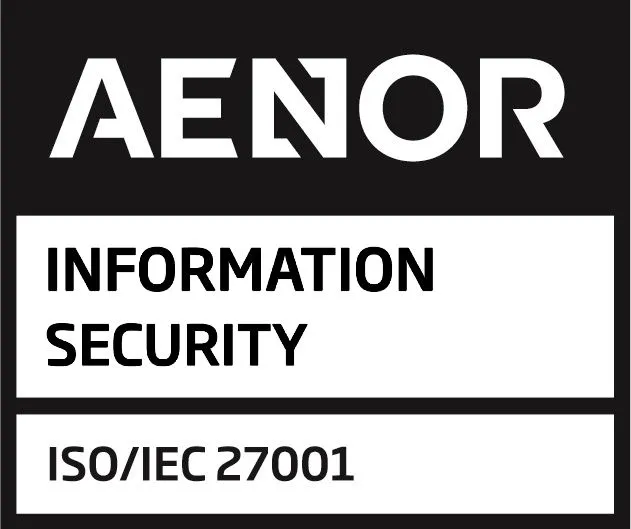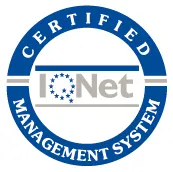
Incorporating an intranet into your company enhances operational efficiency and reinforces internal communication. In this article, we will look at the benefits offered by this communication tool and highlight some of the best features it provides.
Table of Contents
What is a Corporate Intranet ?
A corporate intranet is an intelligent platform that centralises a company’s internal information and communication systems. It is a network that is exclusive to an organisation, that is, permission is required in order to access its contents.
A corporate intranet is a secure, controlled and highly effective solution that can be used by companies of all sizes, as well as public organisations, universities and other institutions. This article discusses how companies can get the most out of this tool.
Uses of a Corporate Intranet
A corporate intranet offers a multitude of functionalities, but best of all, each company can tailor theirs to their specific needs. Not all organisations are the same, and the intranet can be as simple or as complex as desired. In fact, choosing the most appropriate features depends on a number of factors, including your company’s objectives and its specific needs and size. This can range from improving internal communication to managing key processes. The options are endless. Read on to find 11 top features that will help you get the most out of this incredible tool.
1. HR Management: From uploading payroll and managing holiday requests to authorising refunds and facilitating access to internal contacts.
2. Document centralisation: Create a centralised library of all your essential company documents, including protocols, policies, corporate presentations, guides and manuals.
3. Event organisation: Create and manage events and activities, including attendance control and automatic waiting lists.
4. Publishing internal communiqués: Post content that everyone should be aware of: information on mandatory training, holiday dates or bank holidays, updated policies, etc.
5. News and achievements: Share the latest on corporate initiatives, successes and events; create image galleries of events, such as the company Christmas dinner.
6. Training and further learning: Design e-learning platforms containing tutorials, courses, lessons and exams. You can even encourage platform use by offering rewards for personal achievements.
7. Surveys: Encourage engagement and participation through surveys, polls, publishing important dates, company stories and the use of suggestion and feedback mailboxes.
8. Interaction, collaboration and feedback: Integrate corporate chat platforms or productivity and work management platforms. Encourage employees to send messages, requests, comments, suggestions or even anonymous complaints and accusations.
9. Integration with external software: The intranet typically allows integration with tools that are already part of the company’s ecosystem, such as CRM systems, HR management platforms or others.
10. Company organisation chart: Map out the team structure so that employees can easily connect with each other by searching for a name, job title or location. This should ideally be updated automatically. Employees should also be able to personalise their profile and add their contact information and even a photo or short biography.
11. Access from mobile devices to reach all employees: In the past, corporate intranets were only accessible from the office, considered a secure space. However, this no longer makes much sense. Today, with teleworking and a large proportion of the blue collar workforce working outside the office, employees need to be able to securely access the intranet from any device, wherever they are.
Why Do You Need a Corporate Intranet?
Having an intranet brings a number of benefits to any company, whether it is an SME or a multinational. The advantages that the tool provides saves both time and money, because, apart from promoting teamwork, it also improves the efficiency and productivity of a company.
Among the benefits of implementing a corporate intranet, the following are worth mentioning:
- Optimises internal communication: an intranet is a reliable information channel, it centralises communication and facilitates interaction between different departments and teams. Remember, in order to replace the use of email or reduce informal communication (via WhatsApp or other social networks) with an intranet system, a solid communication plan is required
- Increases efficiency and productivity: task automation and quick access to information reduces time spent on recurring work duties or on searching for documents. How often has one of your employees had to ask HR for basic company information, or even for the same information several times? The intranet can be a self-service resource that facilitates the day-to-day needs of employees.
- Supports onboarding: a good intranet turns a new employee’s onboarding into a quick and easy process. Imagine having everything in one place: the welcome handbook, a video from the CEO giving an insight into the company culture, and a how-to-do list of useful tasks such as setting up your email. Self-service resources mean you can answer FAQs, such as how to request holiday time-off or access your payroll, without having to rely on anyone else. Integration into the team becomes fast and smooth for all!
- Encourages interaction and collaboration: allows teams and departments to work in a more coordinated way. This is particularly important for companies with employees working remotely or located in different locations.
- Reinforces organisational values and culture: provides resources such as mailboxes, discussion forums and surveys, which help to align employees more closely with the company’s mission, vision and values.
- Facilitates professional development: offers training and continuous learning resources, providing new opportunities for professional growth and development.
- Increases team engagement: creates an environment where employees’ opinions are valued, increasing commitment to the company, work motivation and sense of belonging.
Discover how to improve internal communication with our all-in-one platform.
Internal digital platform: functionalities, based on company size
The corporate intranet is a unique, living space. No two intranets will be the same, as their functionalities will vary greatly depending on the size and specific needs of each company. According to the latest market analysis, the following are some of the main functionalities requested by companies:
Intranet for SMEs
Small and medium-sized companies need simple but effective solutions to optimise their resources. Their biggest challenge is the need to use many different platforms and tools without being able to fully unify them. A corporate intranet can be the key to solving these problems. When looking for and choosing an intranet, SMEs tend to value features such as the following:
- Centralisation of information: Having one single place to store documents, policies and internal communications is crucial. Many SMEs use Google Workspace, but when an employee needs to access the latest version of the policy on remote working for example, they are not always likely to know where to find it. A corporate intranet ensures that information is always up to date and accessible.
- Communication tools: Email is still the most widely used channel for sharing news and communications in small and medium-sized companies, which can be problematic if frontline employees do not have a corporate email. An intranet that allows centralised communication, ensuring that all employees, regardless of their position, have access to relevant information, is a fantastic solution.
- Efficient HR management: Automating processes such as leave requests, payroll access and managing claims and refunds helps save time and avoids errors. Many SMEs in Spain still rely on spreadsheets for these tasks, but an intranet can greatly simplify this work.
- Internal training: Training is essential for professional development and an intranet is a good way to make courses, workshops and resources accessible to all employees. This not only encourages ongoing learning, but also increases employee motivation and engagement.
- Access permissions: Guaranteeing information security is crucial. With an intranet, companies can set up access permissions based on roles or departments, thereby ensuring that each employee only has access to what is necessary for their job.
Intranet for Large Companies
The needs of large companies are more complex, requiring robust and scalable solutions. A modern corporate intranet is essential to unify processes, connect employees in different locations and ensure information security. When implementing an intranet, large organisations often value features such as those listed below:
- Multilingual and geographic segmentation: International companies often require the content of their communications to be in multiple languages and segmented according to location or headquarters. A company with branches in various countries may face misunderstandings if sending global communications without adapting them to each language or cultural context.
- Advanced security: Data protection in large corporations is a key issue. Sophisticated access controls, data encryption and compliance with international regulations, such as GDPR, are essential for the protection of sensitive information. For example, a financial data breach can result in significant fines and reputational damage.
- Global collaboration: With teams spread across multiple locations, tools such as Microsoft Teams, SharePoint or custom integrations that facilitate collaborative work and communication across departments and time zones are a must. Large companies often report problems coordinating global projects due to a lack of synchronised access to up-to-date documents.
- Advanced e-learning platforms: In large companies, ongoing learning is fundamental for employee development. Robust training systems allow for customised programmes to be designed, and enable efficient tracking and measurement of results. A common problem is a lack of consistency in training across different branches, which is something a well-designed intranet can resolve.
- Analytics and reporting: Interactive dashboards and analytics tools provide insights into intranet usage, the level of employee participation and the effectiveness of internal communications, thereby enabling informed decision making. For example, an intranet can detect that employees in certain departments are not actively participating in internal surveys, which could indicate disengagement issues.
- Role-based customisation: For companies with complex hierarchical structures, a good intranet system should allow each user to access only the information and tools they need for their role. Such a system will enhance the employee experience and guarantee confidentiality. A typical example is when employees in one location access information intended for those in a different location, leading to confusion and operational errors.
Selecting the right intranet is a strategic decision that must be aligned with the specific needs of each type of company and, of course, with the organisation’s values, mission and vision.
8 questions to ask yourself before implementing a corporate intranet in your company
After considering all the aspects and having decided that your company does indeed need a corporate intranet, it is time to get down to work. The implementation process will involve planning, calculating software costs and contacting suppliers.
Not sure where to start? To help you establish what your company really needs, we’ve come up with questions you should ask yourself:
- What are the problems I need to resolve?
Identify the problems you need to resolve and define the purpose of your intranet. For example, do you wish to improve internal communication? Or optimise processes? Or simply increase employee engagement? The first step is to define your objectives.
- What are my team’s specific needs?
Analyse your team’s particular needs. For example, do they need access to internal training, document management or surveys? Evaluate all the tools and choose the key functionalities you would like.
- Should I choose a customised intranet or an already existing one?
Choose the right type of platform. SharePoint and Vip Connect, are good, easily available options on the market. Take into account ease of use, integration with other internal systems and the budget available. An alternative is to contract an intranet package solution, which offers ready-to-use modules. Selecting the right platform is 80% of the success.
- What resources will I need to reach my target audience?
Plan how resources will be organised on your intranet. This includes news, policies, directories and interactive tools. Make sure the structure is intuitive for all users. A well-designed content structure ensures that your employees will make frequent use of your intranet.
- What precautions are needed in order to protect internal data?
Include access controls and data protection measures. Set permissions according to roles and departments to make sure that each employee only has access to information that is relevant to them.
- Do I wish to create a unique experience for each employee?
Create unique profiles for each employee including key information such as their name, job title and contact information. Configure permissions that tailor the experience based on each person’s location or department.
- What impact will the experience have on employees?
Provide training on intranet usage and monitor it closely to ensure that it is meeting its objectives. Consider interaction tools that encourage two-way communication between employees and managers.
- Do I need multilingual support?
If your organisation is multinational, include multilingual support and segment content by geographic location. For example, avoid announcing one location’s Happy Hour to employees in another country.
Making an informed decision about intranet functionality will allow you to get the most out of this important communication too. This will, in turn, improve your company’s efficiency, employee engagement and ensure your team members are all aligned with your company values.








